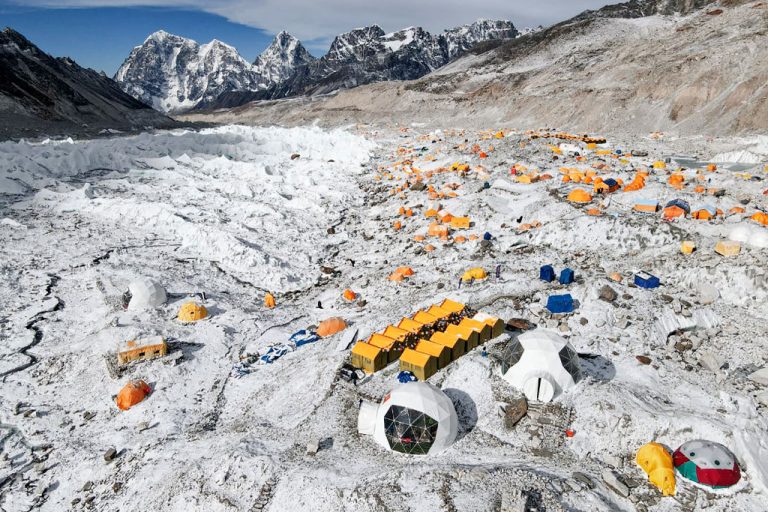According to Dr Yuba Raj Khatiwada, the director of Nepal’s tourism department, so far this climbing season eight people are dead and five are missing after attempting to summit Mount Everest, and he blamed the deaths, in part, on climate change.
The deaths are also raising questions about whether or not Nepal is issuing too many permits to climb in an effort to boost tourism dollars.
If this trend continues, the number of climber deaths may surpass that of 2019 when 11 deaths occurred amidst viral images of discarded climbing gear that spread across the internet at the time.
This year the Nepali government has issued a record number of permits, 478, at a cost of US$11,000, adding an estimated US$5 million to the country’s economy.
2014 was the deadliest year on record when 17 local staff lost their lives on the mountain due to a major avalanche, according to The Himalayan Database, a non-profit organization.
Success
You are now signed up for our newsletter
Success
Check your email to complete sign up
Alan Arnette, a mountain climbing blogger who reached Everest’s summit in 2011 told the Straits Times that people are “seduced and enamored by climbing Mount Everest, and there’s nobody there that will tell them ‘no’ because they’ve paid the money,” adding that climbing operators, along with authorities, have not taken any significant action to make the climb safer to avoid loss profits.
“It’s a pure and simple business decision,” he said.
READ MORE:
- Fortify Your Diet Naturally With Easy-to-Find, Edible Flowers
- Plastic Recycling Releases Massive Amounts of Microplastics Into the Environment, Study Reveals
- Is Time Accelerating, and How?
However, Khatiwada says the government is taking the fatalities seriously, and blamed the deaths in part on climate change.
“The death rate is quite high this season because of the climate and climate change,” he told Bloomberg News via telephone, adding that, “There is no other reason. We are trying our best to reduce the risks, but mountaineering itself is risky.”
Landlocked Nepal is one of the poorest countries in Asia and its tourism sector — propped up by mountaineering — is a major contributor to its economy.
Mount Everest, the world’s tallest mountain, stands at around 8,849 meters or just over 29,000 feet and is accessible through China as well. However, in order to attempt the summit from China, climbers need to demonstrate that they have previously scaled an 8,000 meter peak. Nepal has no such requirement making it the preferred country to attempt the climb.
“You’re going to have some people that are climbing that are inexperienced with unqualified guides,” Arnette said, adding that, “Being at that altitude and under that physicality, the demands are just unpredictable. And as a result, you don’t know what you don’t know.”
So far in 2023, 97 Chinese climbers have attempted to reach the summit, the most of any other country, followed by the United States and India.
The age of climbers is going up as well, increasing the risk of injury or death.
In 1982 the median age of climbers was 34-years-old. Now, the median age of climbers attempting the summit is 42.


















